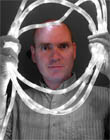|
|
 
|
|
Author
|
Topic: The Film-Tech Digital Cinema System (DCS)
|
|
|
|
|
|
|
|
|
|
|
|
|
|
|
Brad Miller
Administrator

Posts: 17775
From: Plano, TX (36.2 miles NW of Rockwall)
Registered: May 99
|
 posted 02-06-2011 11:09 PM
posted 02-06-2011 11:09 PM




quote: Michael Brown
So someone at the Film-Tech call center builds the playlists, aquires keys etc. I then assume there is some sort of fee the theatre owner is paying to Film-Tech for the service? If so then was is the difference between not just paying a projectionist on site to do those chores? Also in this set-up who is changing Xenons when required, who is cleaning projector filters\cleaning portholes and other site maintenance?
The NOC is an option, it is not a requirement, but when worked out on paper easily proves to be most cost efficient in all aspects. It is also a mere fraction of the cost than even hiring a 17 year old kid working minimum wage who has no idea what he is doing.
The xenon bulb changes and other site maintenance are left to the theater's technician and/or company to dictate. For example, lets say ABC Technical Group handles all of the routine maintenance and repairs for XYZ Theaters. Whatever the bulb changing and site maintenance policies are between ABC and XYZ is would apply. The Film-Tech NOC would notify when scheduled bulb changes were upcoming and in an instance of an equipment failure where the NOC technicians could not remotely repair, the NOC would notify the technican(s) assigned to that location and inform them of exactly what was happening, which also saves the field technician's time in troubleshooting pre and on-site.
quote: David Favel
How "customisable" is the unit?
ie will you ship without amps? As QSC is standard in my cinema.
Fully. Lets say your cinema is currently running 35mm and already has a suitable processor and sound system in place. Nothing would change. We only need to know when the order is placed what type of processor is in each auditorium and its approximate distance away from the projector pedestal so we can provide audio and automation control cables with the system. This also saves time by leaving the existing sound rack and all wiring where it currently is.
Similarly if your theater has something out of the norm that you want controlled (perhaps you have 3 curtains to operate at the beginning of each show), tell us when ordering and we will ship the system with all of that pre-configured to your specific venue. Most features that theaters would need are already included by default, such as multiple masking stops, a curtain, door magnets, end of show alerts, etc.
Bear in mind the picture you see on the front page of the brochure is a standard system with some extra options installed. For example, a Dolby 3D controller is mounted just beneath the blu-ray player. If this was a 2D install, there would be a blank panel there.
Also on the front of the system which is not viewable in the pictures (the port window side) is the UPS battery backup, power distribution with auto-failover and networking. The wiring interface panel simply attaches with 4 screws to this front side of the projector pedestal, which is why it can be pre-terminated before the equipment ever arrives on site. Similarly the electrical requirements for the system are all standard NEMA receptacles, so the electricians can be out of there before the gear arrives as well.
| IP: Logged
|
|
|
|
|
|
|
|
|
|
|
|
Brad Miller
Administrator

Posts: 17775
From: Plano, TX (36.2 miles NW of Rockwall)
Registered: May 99
|
 posted 02-08-2011 12:29 AM
posted 02-08-2011 12:29 AM




quote: Mark Hajducki
It would be likely that the NOC would probably spend much the same amount of time to build the playlists for an entire company, than it would for one site.
Yes and no, we still require a NOC tech to physically verify each playlist, each week, at each location, against the client's programming choices. The client may dictate the trailer programming to the theater manager or may have someone in their corporate office dictate it. (Otherwise we will choose based upon studio recommendations.) Regardless, that level of manual double checking at the NOC will always be there as a failsafe.
quote: Joe Redifer
I'd be interested in hearing how much a theater could save in electrical costs if the DCS was installed theater-wide to optimize such things (obviously the larger the complex, the more it would likely save on energy).
We've been told some pretty staggering numbers during the Texas summer months comparing some almost identical complexes. Trying to pre-calculate those numbers does become amazingly tricky due to different size auditoriums, building/insulation design, type, efficiency, size and how the HVAC was installed, type of lighting in the auditoriums, desired pre-boot time for each item, etc. Regardless, it definitely does pay for itself. For example, auditorium #1's first show may be at 11:00am and auditorium #2's first show may be at 12:30pm. Assuming the HVAC was turned on 60 minutes prior and the auditorium 35 minutes prior to the show start, this means the HVAC would turn on at 10:00am for #1, but wait until 11:30am to turn on for #2. Similarly, the auditorium for #1 would stay powered off until 10:25am and #2 until 11:55am. Auditorium lighting, exhaust, amplifiers, etc...it all adds up. Multiply it out over the complex and the course of a year and it becomes a no brainer.
quote: Joe Redifer
I'm also curious about the LEMS (Lobby Energy management System). Does the system turn certain things back on when the cleaners arrive at night or in the morning, whatever the case may be?
Some theaters have us leave certain sets of lighting on until X number of minutes/hours after the last show of the day ends for the janitors and others have a remote janitor pushbutton that will enable their cleaning lights in the lobby for X number of minutes/hours. Similarly some installations have us activate the auditorium janitor lighting the entire time the auditorium is powered down, while others have a janitor override that will give them X number of minutes/hours to clean that auditorium. Its simply whatever the client wants in their custom programming.
The thing to remember is that everything on these systems works in + or - minutes from the actual show sequences, and each setting is completely customizable to the client's wishes. With a traditional type of EMS system, it functions on a timer. That timer turns everything on at a certain time of the morning and off at a certain time after hours. This wastes electricity because one week your last show of the day might be 10:30pm while another week your last show might be 11:00pm, or even a midnight show. Since the EMS works off of the show schedule, it KNOWS when the auditorium is supposed to be powered on. It KNOWS when the lobby should be on. It KNOWS when X number of minutes has passed from the last start of the day to turn off all of the exterior signage. It KNOWS when that last movie is over when to power down your auditorium, lobby, parking lot lights, etc. That's the beauty of having the projection automation control energy consumption. It can control electrical usage better than any other system possibly could, because it knows what is really happening inside the building.
| IP: Logged
|
|
|
|
|
|
All times are Central (GMT -6:00)
|
|
Powered by Infopop Corporation
UBB.classicTM
6.3.1.2
The Film-Tech Forums are designed for various members related to the cinema industry to express their opinions, viewpoints and testimonials on various products, services and events based upon speculation, personal knowledge and factual information through use, therefore all views represented here allow no liability upon the publishers of this web site and the owners of said views assume no liability for any ill will resulting from these postings. The posts made here are for educational as well as entertainment purposes and as such anyone viewing this portion of the website must accept these views as statements of the author of that opinion
and agrees to release the authors from any and all liability.
|

 Home
Home
 Products
Products
 Store
Store
 Forum
Forum
 Warehouse
Warehouse
 Contact Us
Contact Us




 Printer-friendly view of this topic
Printer-friendly view of this topic








![[Big Grin]](biggrin.gif)










